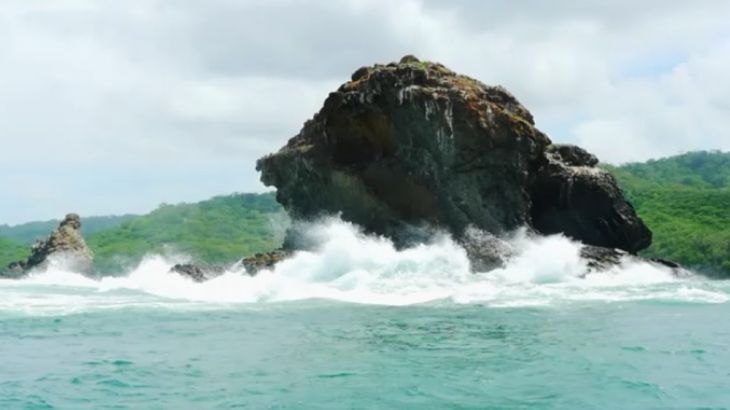
Nicaragua’s great divide
We visit Nicaragua to find out how a massive China-led engineering project is dividing the nation.
Nicaragua is the second poorest country in the Americas, second only to Haiti. Poverty is rampant and easily witnessed on its streets.
The dream of building a trans-Nicaragua canal connecting the Atlantic and the Pacific has been around for centuries, but despite prospects for economic growth, the latest China-backed canal project in Nicaragua is dividing the nation.
Keep reading
list of 4 itemsPhotos: Athens turns orange under North Africa’s Sahara dust clouds
Turtles swimming to extinction in Malaysia as male hatchlings feel heat
Could shipping containers be the answer to Ghana’s housing crisis?
The proposed Nicaragua Canal Project presents a classic trade-off between economic development and the protection of natural resources to the country.
In this case, it is Lake Cocibolca (also known as Lake Nicaragua), the largest lake in Central America and a source of drinking water to thousands of Nicaraguans, that is in danger.
In my legal opinion, it is completely evident that the canal law is against the constitution.
On the Pacific side, the coastal town of Gigante relies on the sea for its basic needs. This is set to change if the canal project goes through, as Gigante will serve as the Pacific port entrance.
However, the less fortunate – in spite of the lack of information available to them – continue to embrace the project as a potential means to escape poverty. They have been promised a change and more opportunities as a result – but this is without knowing the consequences.
Monica Lopez Baltodano, who is an environmental attorney and director of the Popol Na Foundation, an organisation which looks after local civil rights, sees the canal project as one of the biggest threats to local communities.
She warns of the dangers of how the fallout for local resources will affect Nicaraguans.
“They sell people dreams, that a huge investment like this is going to change completely the economical system in Nicaragua, and the poverty in Nicaragua … it’s completely unreal. It doesn’t work that way,” says Lopez about the way in which President Daniel Ortega’s government has sold the project to the desperate public.
With most of the mainstream media consumed by everyday Nicaraguans completely controlled by Ortega’s government too, the legal battle ahead for Baltodano and Popol Na is long and uncertain.
Salvador Montenegro-Guillen is one of Nicaragua’s leading scientists, a professor of ecology and limnology who was once the director of the Center for Research in Water Resources of Nicaragua.
He echoes Baltodano’s sentiments and voices his own concerns about the importance of the lake.
“Lake Cocibolca is actually the jewel of the crown for this country because no other body of water has the quality and quantity of this lake,” he says.
As scientists continue their research to try to rescue the lake, one thing has become apparent – the technical and, in due effect, environmental effects of digging the canal will bring irreparable damage to Lake Cocibolca. Local newspaper Confidencial even took a depth finder through the proposed course of the canal to find that most of the distance across the lake was just too shallow for the purposes of the project.
“That means that they would have to dig up 20 metres, almost. How are they going to get the sediments out [of the water], where are they going to put it? What does that mean for the lake? There needs to be more studies done,” says Katherine Vammen, a microbiologist and research scientist at the University of Central America.
When it comes down to a pros and cons debate, Monica Lopez Baltodano fears the worst.
“To risk all of our most valuable resources, affecting more than 119,000 people, just to get 25,000 jobs for a small period of time … it doesn’t make any sense at all. And I worry that we are putting all of our future at risk by destroying Nicaragua’s lake,” she says.
Could the project change the fortunes of Nicaragua or ruin the country’s most environmentally sensitive areas? TechKnow went to Nicaragua to look at the country’s canal project and the potential fallout.